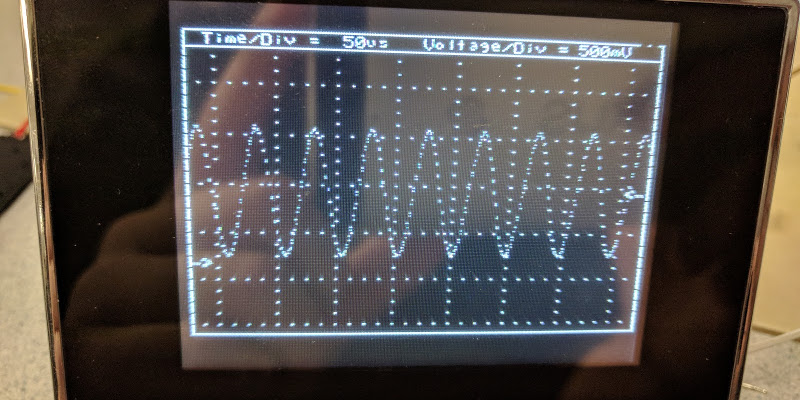When troubleshooting circuits it’s handy to have an oscilloscope around, but often we aren’t in a lab setting with all of our fancy, expensive tools at our disposal. Luckily the price of some basic oscilloscopes has dropped considerably in the past several years, but if you want to roll out your own solution to the “portable oscilloscope” problem the electrical engineering students at Cornell produced an oscilloscope that only needs a few knobs, a PIC, and a small TV.
[Junpeng] and [Kevin] are taking their design class, and built this prototype to be inexpensive and portable while still maintaining a high sample rate and preserving all of the core functions of a traditional oscilloscope. The scope can function anywhere under 100 kHz, and outputs NTSC at 30 frames per second. The user can control the ground level, the voltage and time scales, and a trigger. The oscilloscope has one channel, but this could be expanded easily enough if it isn’t sufficient for a real field application.
All in all, this is a great demonstration of what you can accomplish with a microcontroller and (almost) an engineering degree. To that end, the students go into an incredible amount of detail about how the oscilloscope works since this is a design class. About twice a year we see a lot of these projects popping up, and it’s always interesting to see the new challenges facing students in these classes.
















Impressive! This would take care of 50% of my needs… and adding a second trace another 20%.
But what’s this ” (almost) an engineering degree” stuff? Tons of HAMS have the best EE’s beat hands down. Tim Samaras leading in Tornado Research both in the lab and out doing it. People that actually get out there and simply DO stuff. Any a fine example for a hacking hero, easily spotted by just watching whom EE’s take pot shots at when they aren’t shooting at one another.
The only thing I didn’t like about pursuing an EE degree was the elitism. Started on the first day and it popped its head up fairly regularly. It definitely still exists in the workforce too.
I get it, we’re generally pretty clever and make awesome things, but come on, you don’t have to be a narcissist as well as a god ;)
I’ve felt it too, I’ve also noticed a lot of EEs who have let their fundamentals get rusty. I once ran across a pretty great op amp designer who couldn’t remember how to calculate net capacitance.
There is definitely a level of prestige in the EE world, that paper still carries a lot of weight. Especially in signals and low level firmware.
Typically the best books concerning the “black art” of RF come from HAMs. In fact the best book I know of on electronics in general is Shrader’s Electronic Communications (5th edition), who got his radio license right out of high school. During World War II he taught RF in the Navy, and eventually went on to teach at the university level.
To the best of my knowledge, Shrader never had a Engineering degree. Yet I’ve learned more from that book than I’ve likely learned in any university class.
Very nice work. In a league with Heathkit O-8 I got working few days ago. All tubes, even the rectifier.
They list a sample rate of 640kHz for the shortest time division setting (50us), so 100kHz will still look nice, but unless they do any filtering, you should be able to use it up to 320kHz if you’re happy with 2 samples per cycle ;)
So, did they leave the input off the schematic? It sounds like they are feeding their signal directly into the PIC32 ADC, but it seems like they don’t bother to show it. Just curious if that’s the case, or if you require an (almost) engineering degree to decipher.
hmmm… good question. Because these inputs are perhaps the most interesting part
Why NTSC?
Ease of implementation, excessively well documented, tons of display equipment available to hackers. And this next part I like! The first thing YOU will do YOUR OWN hacking to improve.
what’s NTSC? :-)
Is a TV standard with some fuzziness in color hence the name: Never Twice Same Color.
aye give us a version for tiny cheap PAL CRT black and white tvs
Hack it!
I love messing around with PIC’s and this is a nice engineering exercise. I have a decent 200-MHz dual-trace digital scope but I also have a very cheap JYE DSO-138 200-kHz scope which is a bit more practical if you really need something to throw in the toolbox.